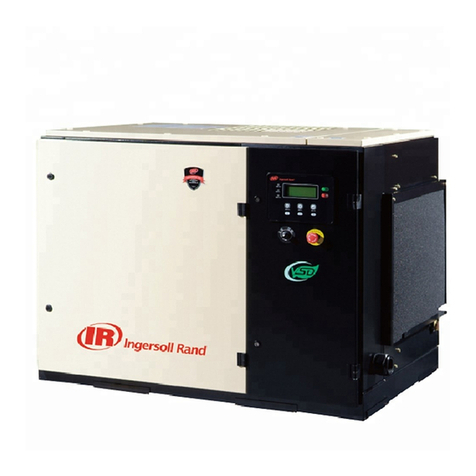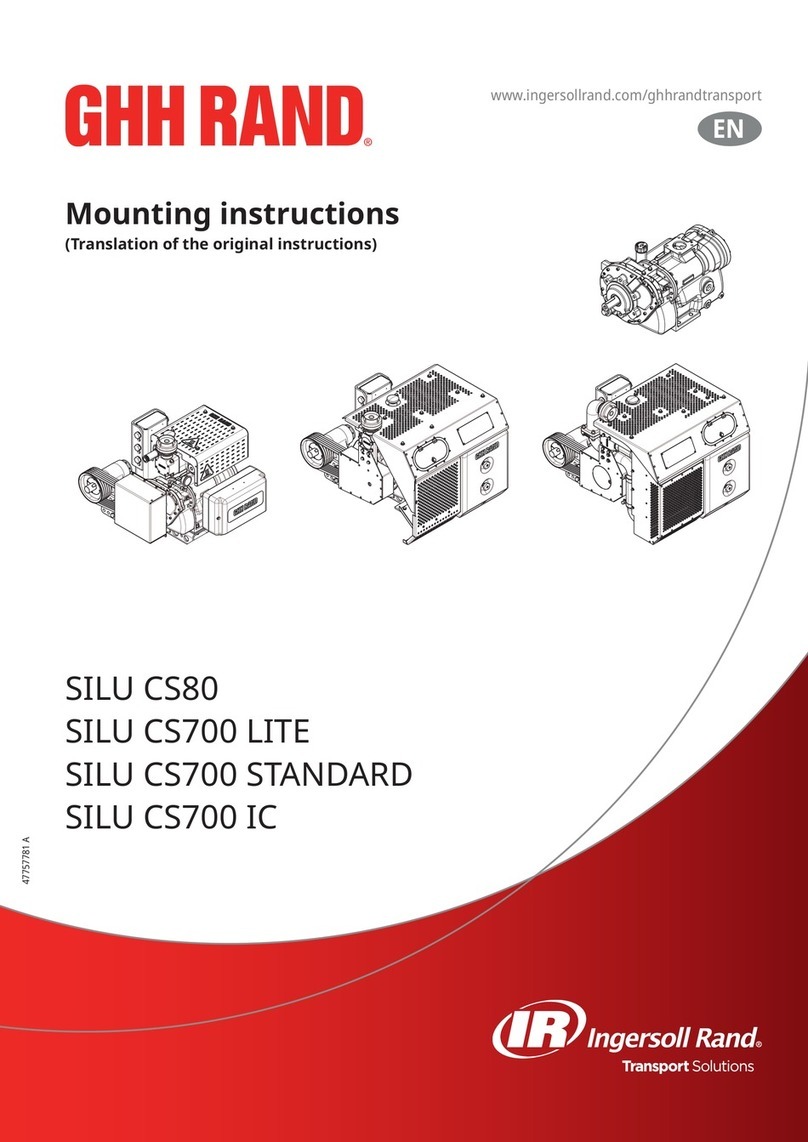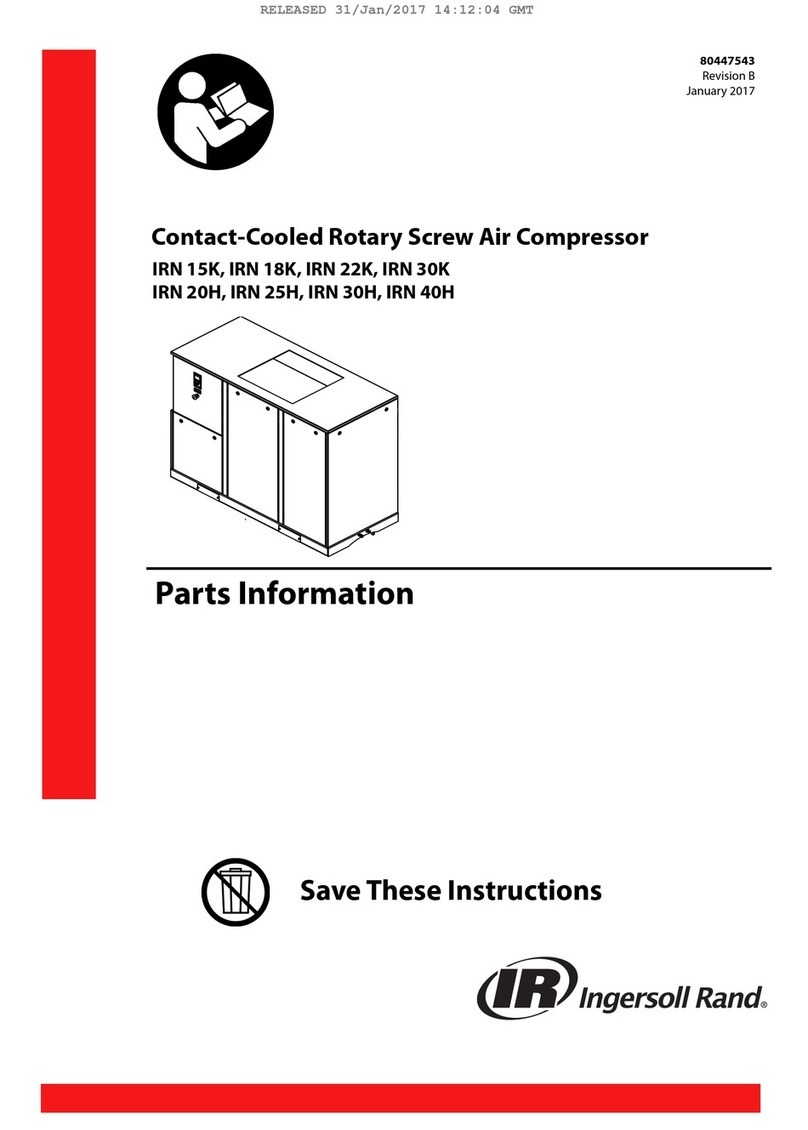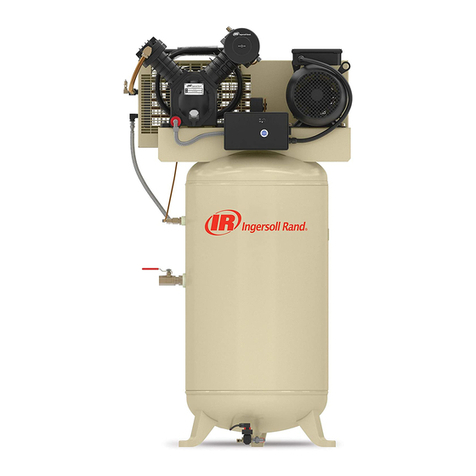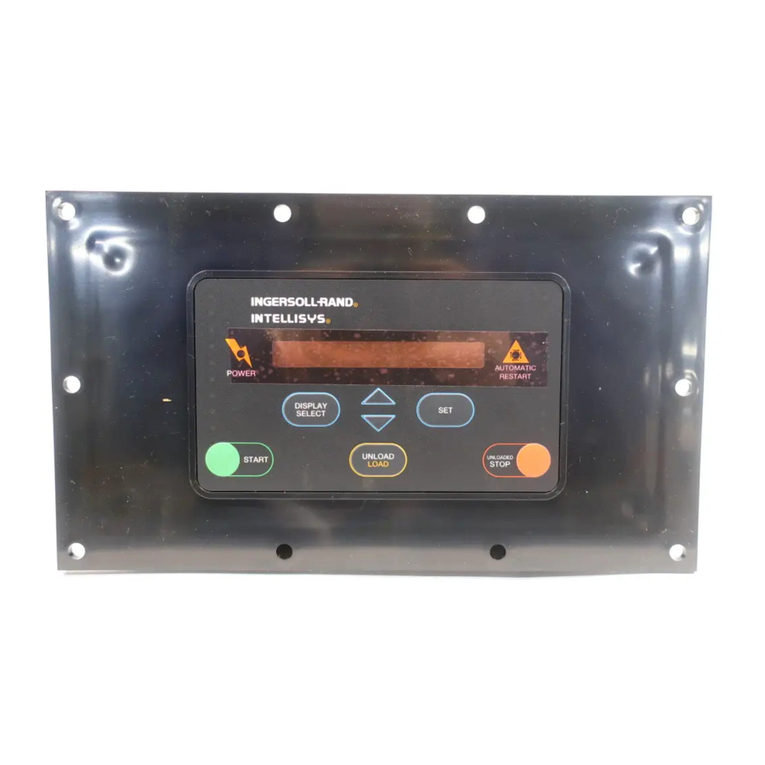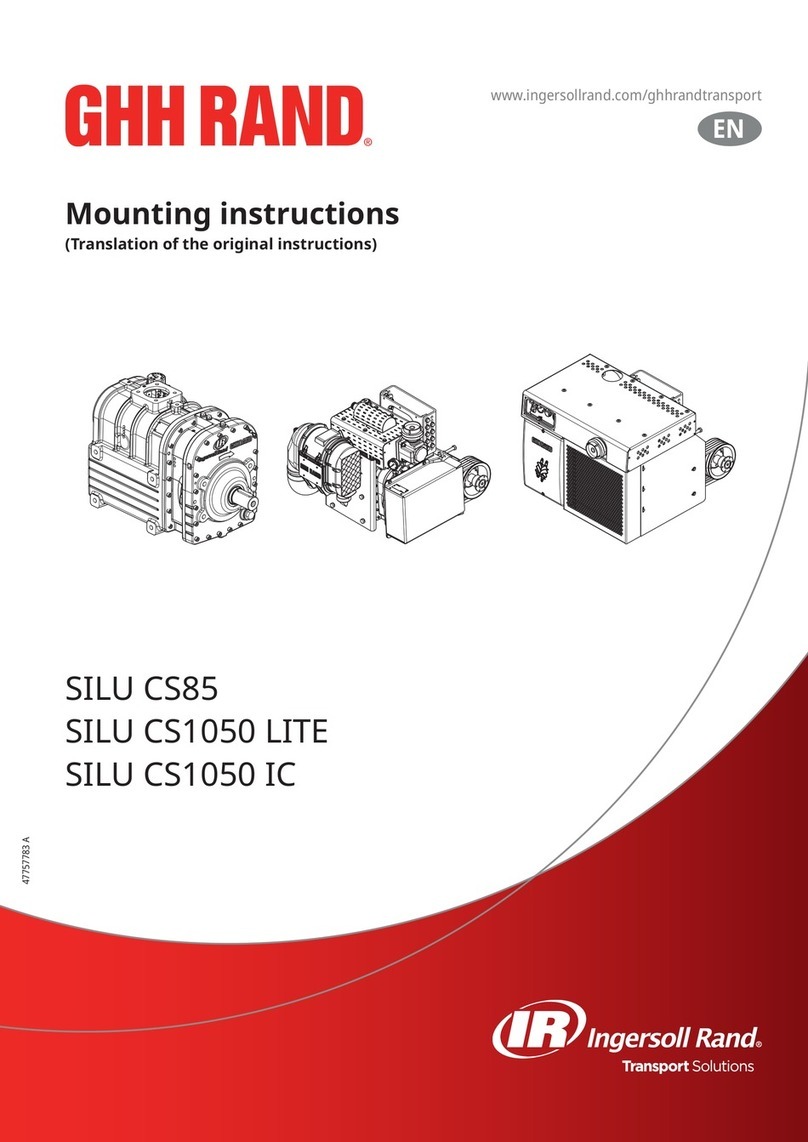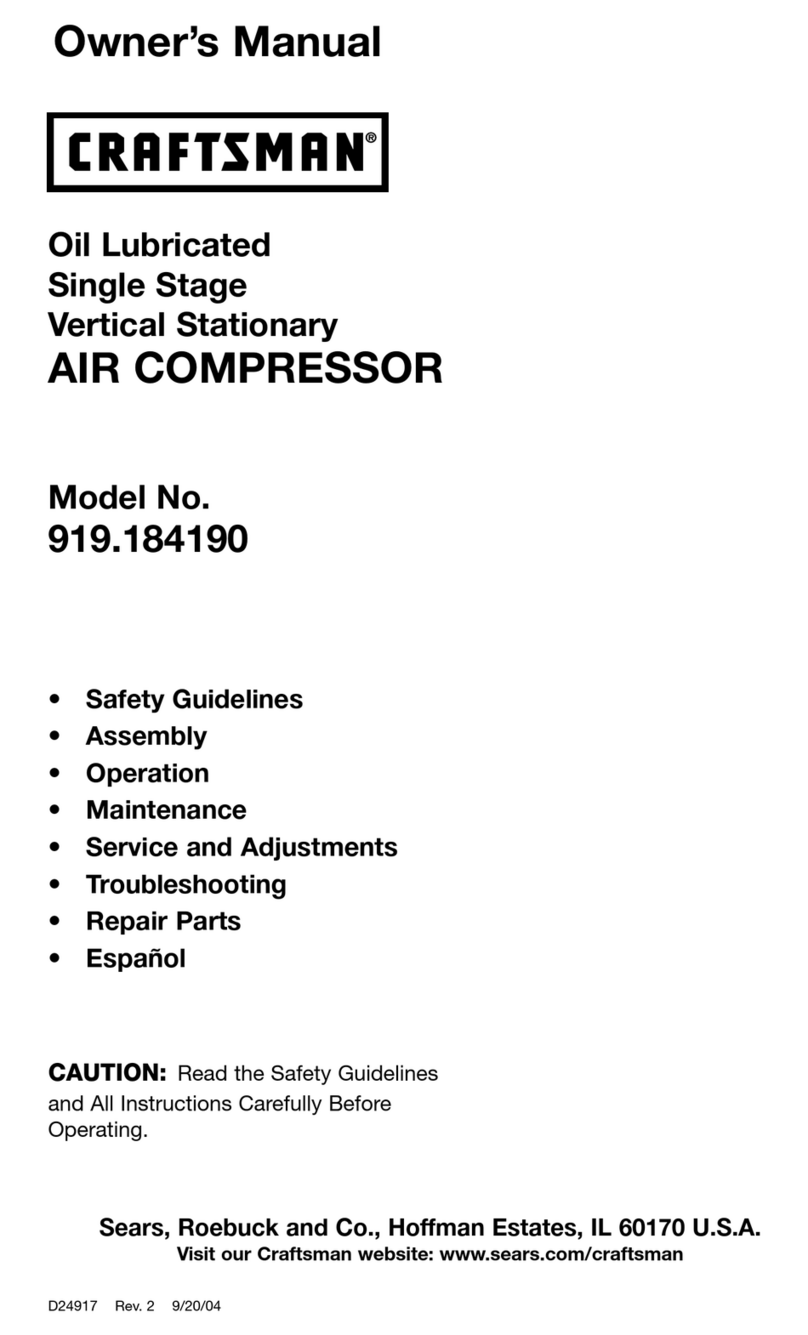
FOREWORD 2
P90 P101 P110 P130
HP95 P150 P180 HP140 7/51
The contents of this manual are considered to be proprietary and
confidential to Ingersoll–Rand and should not be reproduced without
the prior written permission of Ingersoll–Rand.
Nothing contained in this document is intended to extend any
promise,warranty or representation, expressed or implied, regarding
the Ingersoll–Rand products described herein. Any such warranties or
other terms and conditions of sale of products shall be in accordance
with the standard terms and conditions of sale for such products, which
are available upon request.
This manual contains instructions and technical data to cover all
routineoperation and scheduled maintenance tasks by operation and
maintenance staff. Major overhauls are outside the scope of this
manualand should be referred to an authorised Ingersoll–Rand service
department.
The design specification of this machine has been certified as
complyingwith EC directives. As a result:
(a) Any machine modifications are strictly prohibited, and will invalidate
EC certification.
(b)This machine must not be used in USA/Canada. (Where EC
certificationis not valid, and other certification will be required.)
All components, accessories, pipes and connectors added to the
compressedair system should be:
. of good quality, procured from a reputable manufacturer and,
wherever possible, be of a type approved by Ingersoll–Rand.
. clearly rated for a pressure at least equal to the machine maximum
allowableworking pressure.
. compatible with the compressor lubricant/coolant.
. accompaniedwith instructions for safe installation, operation and
maintenance.
Details of approved equipment are available from Ingersoll–Rand
Service departments.
The use of repair parts / lubricants / fluids other than those included
within the Ingersoll–Rand approved parts list may create hazardous
conditions over which Ingersoll–Rand has no control. Therefore
Ingersoll–Randcannot be held responsible for equipment in which
non–approvedrepair parts are installed.
Ingersoll–Rand reserves the right to make changes and
improvements to products without notice and without incurring any
obligation to make such changes or add such improvements to
products sold previously.
The intended uses of this machine are outlined below and examples
of unapproved usage are also given, however Ingersoll–Rand cannot
anticipate every application or work situation that may arise.
IF IN DOUBT CONSULT SUPERVISION.
This machine has been designed and supplied for use only in the
followingspecified conditions and applications:
.Compression of normal ambient air containing no known or
detectableadditional gases, vapours. or particles
.Operationwithin the ambient temperature range specified in the
GENERAL INFORMATION
section of this manual.
.Generationof electricity at 110v (1ph), 230v (1ph), 230v (3ph) and
400v (3ph) / 230v (1ph) nominal at 50 Hertz with centre tap earth.
(WDG)
The use of the machine in any of the situation types listed in
table 1:–
a) Is not approved by Ingersoll–Rand,
b) May impair the safety of users and other persons, and
c) May prejudice any claims made against Ingersoll–Rand.
TABLE 1
Use of the machine to produce compressed air for:
a) direct human consumption
b) indirect human consumption, without suitable filtration and purity
checks.
Use of the machine outside the ambient temperature range
specifiedin the
GENERAL INFORMATION SECTION
of this manual.
Use of the machine where there is any actual or foreseeable risk of
hazardouslevels of flammable gases or vapours.
Use of the machine fitted with non Ingersoll–Rand approved
components/ lubricants / fluids.
Use of the machine with safety or control components missing or
disabled.
WDG
Use of the generator to supply load(s) greater than those specified.
Use of unsafe or unserviceable electrical equipment connected to
the generator.
Use of electrical equipment:
(a) Having incorrect voltage and/or frequency ratings.
(b) Containing computer equipment and/or similar electronics.
The company accepts no responsibility for errors in translation of
this manual from the original English version.
COPYRIGHT 2001
INGERSOLL–RAND COMPANY
EXTENDED LIMITED AIREND WARRANTY
Ingersoll–Rand Portable Compressor Division is pleased to
announce the availability of extended limited airend warranty.
Announcement of the extended warranty coincides with the
introductionof Pro–TecCompressor Fluid. Pro–TecCompressor
Fluid is an amber coloured fluid specially formulated for Portable
Compressors and is being provided as the factory filled fluid for all
machines.
All machines have the standard airend warranty –
The earlier of 24
months from shipment to, or the accumulation of 4000 hours of service
by the initial user
*
.
The warranty against defects will include replacement of the
completeAirend, provided the original Airend is returned assembled
and unopened.
The optional limited warranty is the earlier of 60 months from
shipment to, or the accumulation of 10,000 hours of service. The
optional warranty is limited to defects in major components (rotors,
housings,gears and bearings), and is automatically available when the
followingconditions are met:
1. The original airend is returned assembled and unopened.
2. Submissions of proof that Ingersoll–Rand fluid, filters and
separatorshave been used. Refer to the Operation and Parts manual
for the correct fluids, filters and separator elements required.
3. Submissions of proof that maintenance intervals have been
followed.

